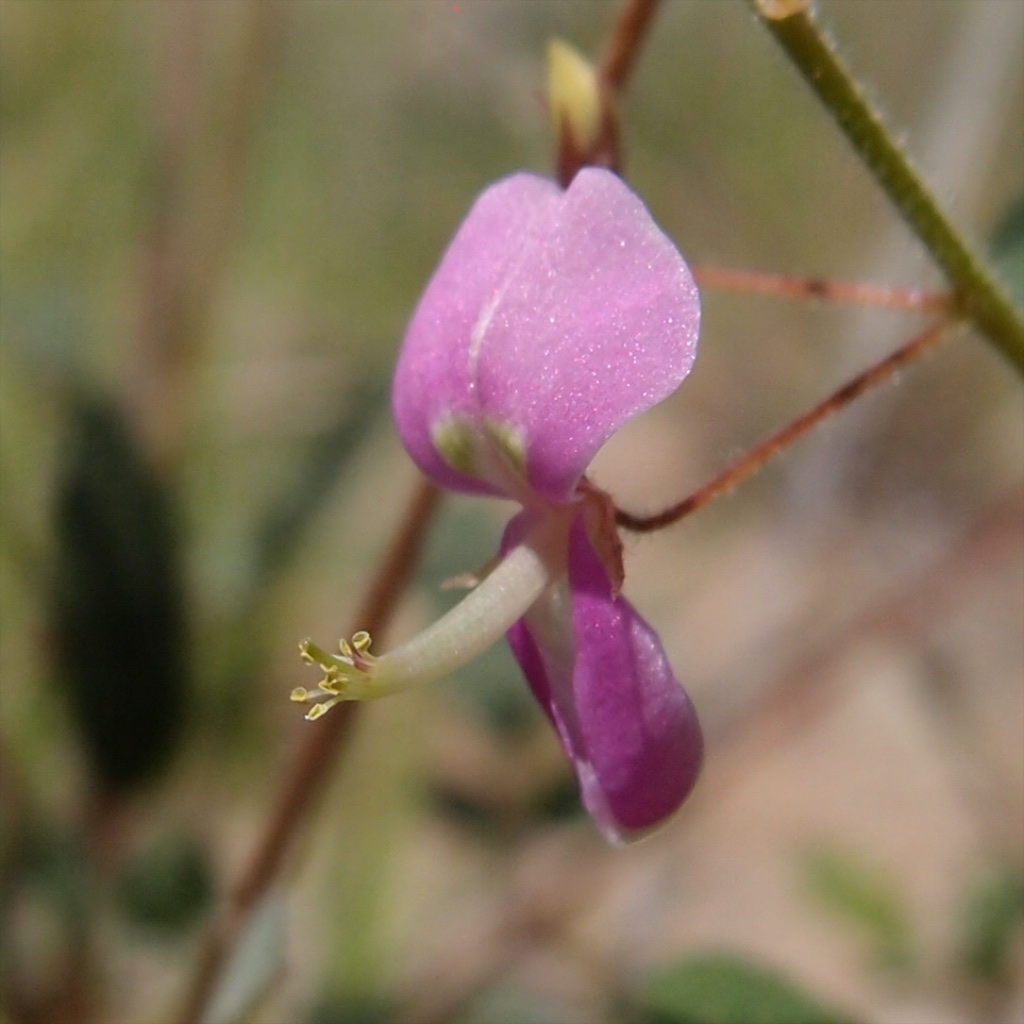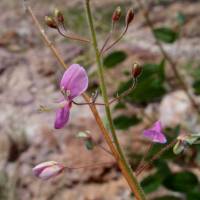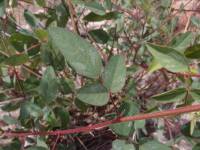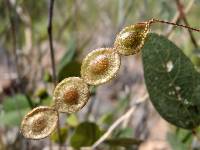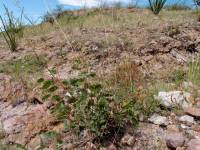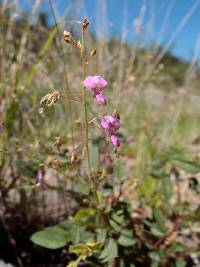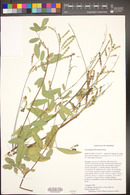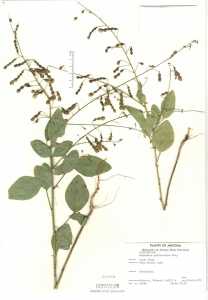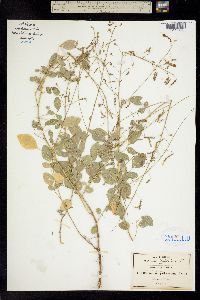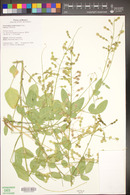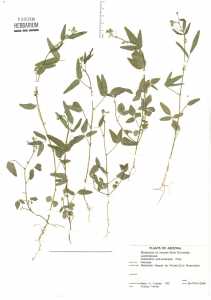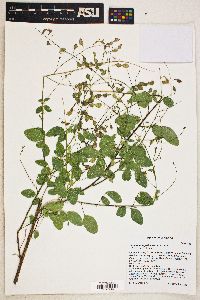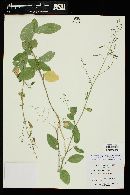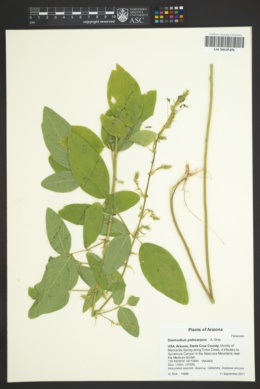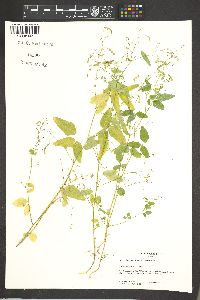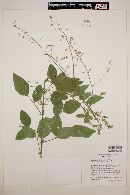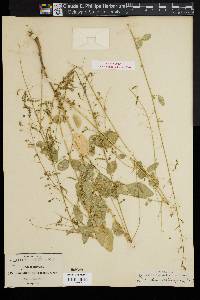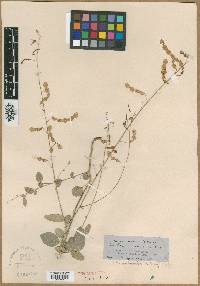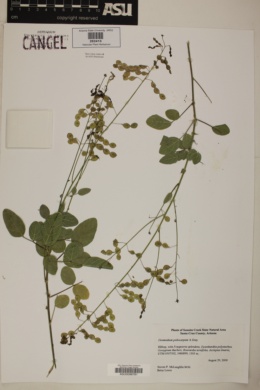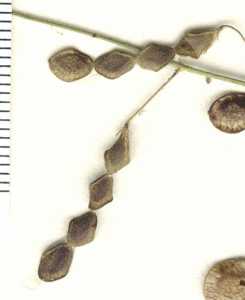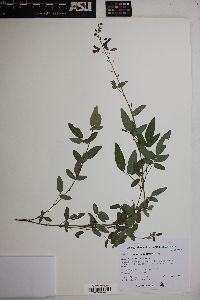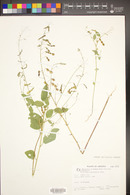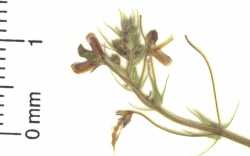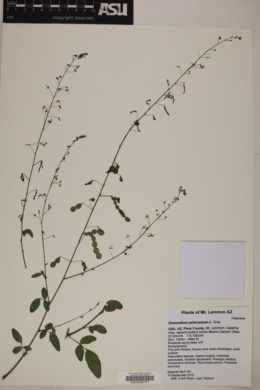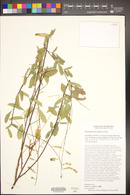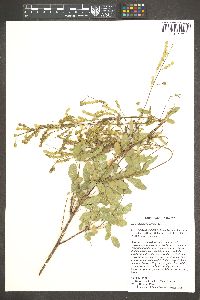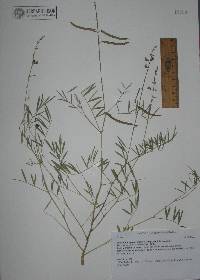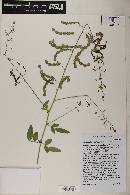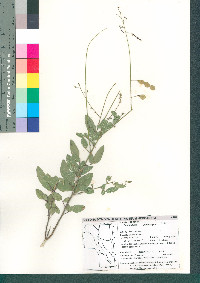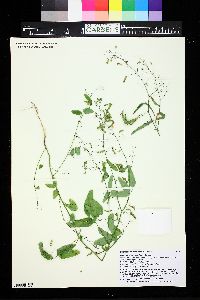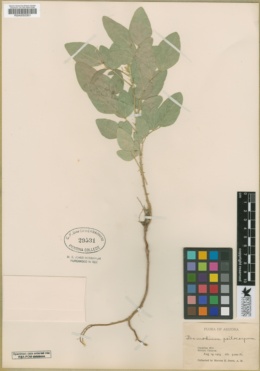Desmodium psilocarpum
|
|
|
|
Family: Fabaceae
Santa Cruz Island Tick-Trefoil, more...Santa Cruz Island ticktrefoil, Santa Cruz Island tick trefoil
|
Perennial, Herbs, Stems woody below, or from woody crown or caudex, Taproot present, Nodules present, Stems erect or ascending, Stems less than 1 m tall, Stems solid, Stems or young twigs sparsely to densely hairy, Stems hairs pilose or spreading, Stems with hooked uncinate hairs or prickles, Leaves alternate, Leaves petiolate, Stipules conspicuous, Stipules green, triangulate to lanceolate or foliaceous, Stipules free, Leaves compound, Leaves pinnately 3-foliolate, Leaves odd pinnate, Leaf or leaflet margins entire, Leaflets opposite, Stipels present at base of leaflets, Leaflets 3, Leaves hairy on one or both surfaces, Infl orescences racemes, Inflorescence panicles, Inflorescence axillary, Inflorescence terminal, Bracts very small, absent or caducous, Bracteoles present, Flowers zygomorphic, Calyx 2-lipped or 2-lobed, Calyx hairy, Petals separate, Corolla papilionaceous, Petals clawed, Petals blue, lavander to purple, or violet, Banner petal ovoid or obovate, Wing petals narrow, oblanceolate to oblong, Wing tips obtuse or rounded, Keel tips obtuse or rounded, not beaked, Stamens 9-10, Stamens diadelphous, 9 united, 1 free, Filaments glabrous, Style terete, Fruit a loment, jointed, separating into articles, Fruit stipitate, Fruit unilocular, Fruit indehiscent, Fruit elongate, straight, Fruit exserted from calyx, Fruit compressed between seeds, Fruit glabrous or glabrate, Fruit 3-10 seeded, Seeds ovoid to rounded in outline, Seeds reniform, Seed surface smooth, Seeds olive, brown, or black.
Wiggins 1964 Duration: Perennial Nativity: Native Lifeform: Forb/Herb General: Perennial with stems erect to prostrate, from woody base to 1 m tall, the stems much branched and with puberulent to sparsely pilose stems, the stipules narrowly to broadly ovate-lanceolate, asymmetrical at base. Leaves: Trifoliate leaves on petioles 2.5-5 cm long, sparsely puberulent and pilose, leaflets bright green with reticulate veins, leaflets ovate, elliptic, or broadly ovate-lanceolate 1-6 cm wide and 1.5-10 cm long, rounded at base, obtuse at apex. Flowers: In terminal or axillary racemes, simple or compound, corolla rose purple, drying greenish with banner 3.5-5 mm long. Fruits: Flat loments with several single seeded segments, indehiscent, 3-6 jointed, 2.5-5 cm long, the joints elliptic-rhomboidal, 3-5 mm wide, 6-10 mm long, reticulate to glabrate. Ecology: Found on hillsides along streams and in canyons, often found in disturbed areas from 3,000-5,000 ft (914-1524 m), flowers July-October. Distribution: Ranges east into the Chihuahuan desert into Tamaulipas and south into Sonora to the very southern edges of the Sonoran Desert. Notes: Distinguished by the segments being equally notched, the segments not revolute, with the loment not appearing twisted, having little inconspicuous flowers, with wide ovate leaflets. Ethnobotany: Unknown Etymology: Desmodium is from the Greek desmos for chain, which is a reference to the jointed seed pods, while psilocarpum means with glabrous fruit. Synonyms: Meibomia psilocarpa Editor: SBuckley 2011 |

